History
Physikalisch-Meteorologisches Observatorium Davos / World Radiation Center

In 1907, the chemist Carl Dorno founded the "Physical Meteorological Observatory Davos", which he operated from his home, the Villa Dora in Davos Platz. The aim was to investigate the climatically relevant properties of the health resort. Dorno was encouraged to do this because his only daughter suffered from tuberculosis and sought relief in Davos. Dorno studied the interaction between solar radiation and the atmosphere. Through systematic observations he laid the foundations for the climatological laws of radiation processes. As a result, he has become the recognized founder of radiation climatology. It is thanks to his research that the climatic healing powers of Davos are better researched than those of any other health resort. In 1926, after twenty years of activity, he resigned as head of the observatory. Carl Dorno was born on 3 August 1865 in Königsberg and died on 22 April 1942 in Davos.

Dorno initially began in two rooms of the Villa Dora, and then expanded the observatory onto two floors. In a 1913 report about the Observatory, he writes: "The station is built and maintained by private means, and in the five years of its existence the cost has been about 500,000 francs, of which half is due to the very expensive rent, heating, salaries for two employees and small expenses, and the other half is due to the acquisition of instruments and construction facilities. All observations are personally collected and processed by me, the results of the years 1908 to 1910 appeared in "Study on Light and Air of the High Mountains" published by Vieweg & Sohn in 1911."

This picture of a Villa Dora laboratory shows how Dorno worked around 1910. In addition to the photographic utensils on the washing cabinet, there are several instruments for measuring the radioactivity of rock and soil, in soil air, sources and precipitation. Due to the known relationship between atmospheric/ground electricity and radioactivity, the latter was also studied as a supplement to the measurements of atmospheric conductivity and electricity.
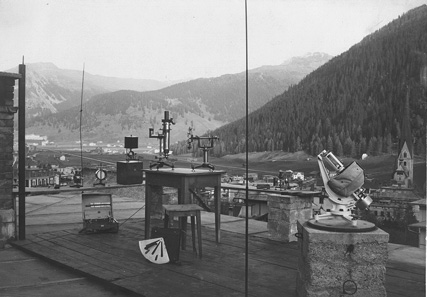
Instruments in the picture: Arago-Davys actinometer, Weber's frosted glass photometer with tube for direct solar measurements, glass plate for determining the local brightness, Michelson's actinometer, Ångström's Pyrheliometer with accessories, Weber's apparatus for measuring the photographic equivalence of solar and sky radiation, various electrometers and a high-voltage battery for measurements of air electricity and conductivity, Weber's polarimeter, Savar's polariscope theodolite, Zeiss' apparatus, and Jensen's pendulum quadrant with polariscope.

Board of Trustees and Scientific Advisory Board at the inauguration ceremony on 3 - 5 January 1924 in the Great Hall of the Town Hall in Davos (Carl Dorno, front row on the right). Due to the inflation of the 1920s, Dorno lost almost his entire fortune and handed over the Observatory in 1922 to the foundation "Institute for High Mountain Physiology and Tuberculosis Research in Davos". It was founded shortly before by the Davos Medical Association together with the Cantonal Medical Association, the Swiss Society for Natural Science, the Swiss Society for Climatology and Balneology, the Swiss Red Cross, the Canton, the Local Authority and others. Dorno was named honorary and board member of the foundation. After his resignation in Autumn 1926, Dorno bequeathed the instruments to the Foundation, into which the Observatory was incorporated. The name was subsequently changed to "Swiss Research Institute for High Mountain Climate and Tuberculosis in Davos".

Frederik Lindholm, Sweden's first state meteorologist, was appointed to PMOD Director after Dorno's resignation in Autumn 1926. During his three years at the Observatory, measurements and registrations of the various fields of radiation research continued and, in particular, investigations in the ultra-red region of the solar spectrum (now known as infrared) were extended. Cosmic radiation was taken up as a new field of research. On 1 October 1929, Lindholm resigned from the leadership of the Observatory and resumed his post in Sweden.
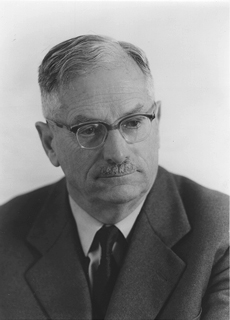
In 1929 Walter Mörikofer, a native of Basel, who had been an assistant at the PMOD for one and a half years, became the Director. During his time at the PMOD, he provided an invaluable service for the practical health resort climatology of Switzerland, in that he managed to classify the health resorts into different climatic zones. Thus, the climatic spa resorts could be classified according to their healing factors. Mörikofer also had his employees study the basics of radiation. The results of these studies gained international recognition and newly constructed PMOD instruments were widely used around the world. In 1966, Mörikofer resigned as the PMOD Director. He died on 10 April 1976 at the age of 84 years in Davos.

Mörikofer invested great effort (4th from left) in the worldwide standardization of radiation measurements. He made valuable contributions to the understanding of the differences in the radiation scales used at that time. Comparisons of the PMOD instruments with pyrheliometers from Uppsala and absolute radiometers from the Physikalisch Technische Reichsanstalt in Berlin showed results that were difficult to interprete because they did not correspond to consensus opinion. The requirement for a central calibration institute was discussed at IMO and IUGG meetings in the 1930s for which the PMOD was proposed. However, the outbreak of World War II thwarted these plans.
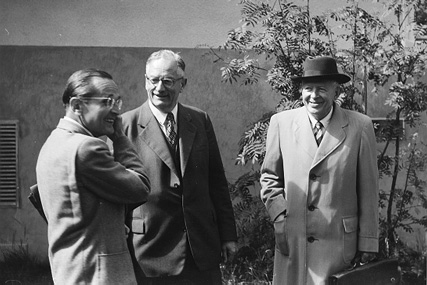
In 1956, the radiation symposium and the International Radiological Commission (ISK) meeting took place in Davos. Since this was the first time that a large-scale, global measurement campaign was to take place, it had to be ensured that the measurements could be related to a jointly defined scale. In addition, the results were to be as close as possible to the actual values defined by the physical system of standard units. Various comparative measurements were used in ISK discussions, including those of the PMOD in the 1930s, which accounted for a difference of about 5%. In order to implement the physical units as well as possible, it was decided to define the new International Pyrheliometer Scale (IPS-1956) as being 1.5% above the Angstrom and 2% below the Smithsonian scales.

The first "International Pyrheliometer Comparisons" (IPC) took place in 1959 (IPC-I, see picture) and 1964 (IPC-II). During IPC-I, various circumstances led to the incorrect implemention of the envisaged introduction of the International Pyrheliometer Scale, IPS-1956. The confusion was therefore great and not conducive for the desired standardization. Only a repetition of the comparisons with the Davos reference instruments in the 1970s, as well as further comparisons, provided a better understanding of the problems that had arisen.

In 1966, Emil Flach became the new PMOD Director. He was primarily concerned with bioclimatic problems. Negotiations between the Meteorological Central Institute (now MeteoSwiss, MCH), the World Meteorological Organization (WMO) and the Swiss Confederation led to the proposal to operate the World Radiation Center (WRC) at the PMOD. Emil Flach was primarily involved in the establishment of the WRC, which Claus Fröhlich took over in 1971. In 1974, Flach resigned as director of the PMOD and Fröhlich took over as the new Director of the PMOD/WRC in the following year. Emil Flach died on 15 September 1995 at the age of 90.

The creation of radiation centers as guarantors of the worldwide homogeneity of radiation measurements was discussed after IPC-II (see picture). Two sites were proposed: the PMOD and the Main Geophysical Observatory (GGO) in St. Petersburg, Russia. It was decided that while the PMOD would maintain the World Radiation Reference and conduct IPCs every five years, the focus of the GGO's tasks was to be on the publication of worldwide radiation data. On 1 June 1970, the Federal Council decided to support the establishment of the World Radiation Center, and the WRC officially opened on 1 January 1971.
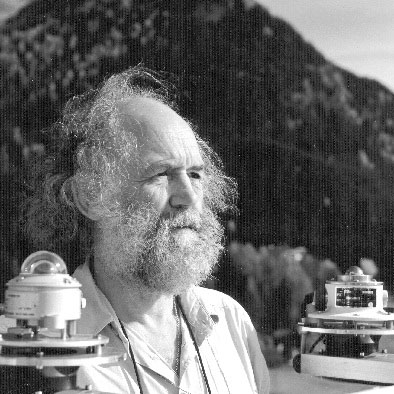
Claus Fröhlich started in 1969 at the PMOD as a specialist in the field of heat conduction. He ran the new World Radiation Center (WRC) when operations bagan on 1 January 1971. In 1975, Claus Fröhlich took over as the new Diector of the PMOD/WRC. Although he retired in 1999, he was still actively involved in his most important project, the VIRGO space experiment onboard the SoHO satellite. Claus Fröhlich was working on the latest calibration parameters only a few days before his recent death on 22 February 2019.

Two absolute radiometers participated during IPC-III (1970) for the first time. The development of new radiometers began thereafter at the PMOD/WRC, which on the one hand formed the basis for the fulfillment of the tasks as a World Radiation Center, but on the other hand could be used for space experiments. After the Absolute Radiometer Comparisons (1974) and IPC-IV (1975), a World Standard Group (WSG, see picture) of 15 absolute radiometers consisting of 9 different types was defined. As a result, the definition of the World Radiation Reference (WRR) was based on the results of this study. The WRR was introduced as a replacement for the hitherto valid but incorrect IPS-1956 scale. Analogous to the original kilogramme in Paris, the WSG serves as the calibration reference of solar irradiance, measured in W.m-2.
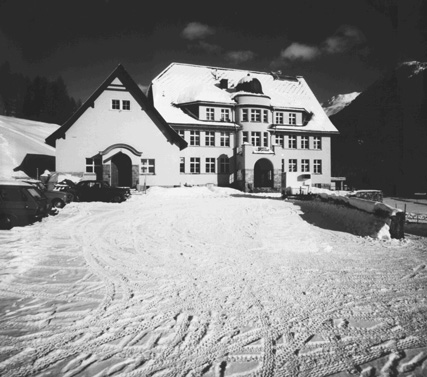
As a result of the merger of the PMOD and the WRC, the Villa Dora became too cramped. The Davos Local Authority therefore offered the old schoolhouse in Davos Dorf as a replacement while the federal government contributed CHF 630000 to the renovation costs. Renovation work was finished in 1975, and the PMOD/WRC moved in at the end of 1976. The inauguration took place in March 1977. The old schoolhouse was designed in 1909 by the Architect, Otto Manz, and built from 1909 to 1911.
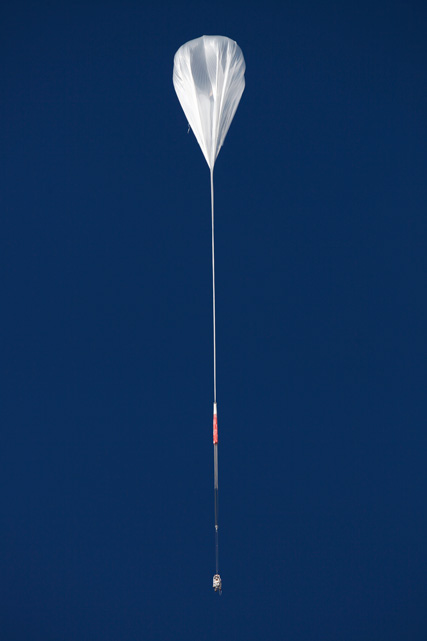
With improved instruments and globally standardized measurements, the question arose in the 1970s as to whether the Total Solar Irradiance (the so-called "solar constant") was constant. The PMOD/WRC and Observatory of Geneva conducted several stratospheric balloon experiments from 1979 to 1983. In 1983, the Jet Propulsion Laboratory, Pasadena, and the Goddard Space Flight Center, USA, carried out a rocket experiment on the New Sands site in New Mexico. After just under 5 minutes, the measuring instruments were brought to 310 km, and after 13 minutes, the rocket landed with a parachute about 150 km from the launch site.

In August 1992, the Swiss astronaut Claude Nicollier launched the SOVA experiment of the PMOD/WRC from the Atlantis Space Shuttle (STS-46) on the European ESA platform "European Retrievable Carrier" (EURECA) at an altitude of 508 km. For over a year - until EURECA was returned to Earth (1 July 1993, Endeavor Space Shuttle STS-57) - SOVA provided data. EURECA is one of the few satellites that has been returned in order to conduct post-calibration measurements. EURECA is currently exhibited at the Swiss Transport Museum in Lucerne.

The Solar and Heliospheric Observatory (SOHO) mission was launched in December 1995, which is equipped with the VIRGO experiment for measuring the Total Solar Irradiance. Among other things, VIRGO consists of 2 absolute radiometers and a solar photometer. SOHO was built by ESA and NASA, and still provides important data on the Sun's internal structure, the solar atmosphere and the solar wind. From the Lagrangian Point 1 (a place between the Sun and the Earth where the coriolis and gravitational forces balance out), SOHO can continuously observe the Sun.

The astrophysicist Prof. dr. Werner Schmutz became the new Director of the PMOD/WRC in July 1999. In 2002 he was appointed titular professor of the Department of Physics at the ETH Zurich. Prof. Schmutz was especially interested in the influence of the Total Solar Irradiance on Earth's climate. He retired in 2019 but continues working as a research scientist at PMOD/WRC.

The year 2007 was marked by the celebrations for the 100th anniversary of the Observatory. On 21 March and 23 June 23 2007, we held an Open-Day to those who wanted to gain an insight into radiation measurement, climate calculations, and solar physics. One of the highlights of our anniversary year was the public lecture by Claude Nicollier at the Davos Congress Center. The Swiss astronaut deployed the PMOD/WRC SOVA experiment on the EURECA satellite into Space in 1992 during one of his space missions.

The "Solar Variations and Irradiance Monitor" (SOVIM) experiment was conceived in 1998 but - due to the catastrophe of the Columbia Space Shuttle - was only installed on the ISS on 7 February 2008. SOVIM was equipped with 4 absolute radiometers and 2 solar photometers and was based on the SOVA design of the EURECA satellite. SOVIM was foreseen as a replacement for VIRGO, but failed in April 2008 after a few months in use.

The "Precision Monitor Sensor" (PREMOS) experiment was part of the French PICARD satellite and was launched on 15 June 2010 to perform measurements of solar constant and spectral irradiance. After 4 successful years, PICARD was shut down in 2014 for financial reasons. The "Lyman Alpha Radiometer" (LYRA; see picture) experiment on the ESA PROBA-2 satellite was launched on 2 November 2009, to make UV measurements of the Sun. LYRA has been able to use this data to determine the influence of the Sun on the Earth's middle atmosphere. LYRA is still measuring.

Renovation of the PMOD/WRC building began immediately after the end of IPC-XI (autumn 2010). While half of the employees moved to the former Dutch Asthma Clinic in Davos Platz, the technical department remained on the premises in containers. Measuring instruments from the PMOD/WRC roof and selected instruments from the WSG were given a new provisional location there, so that the operation of the World Radiation Center was also guaranteed during the renovation. On 17 August 2012, after nearly 2 years of construction and one and a half years in the containers, all employees were able to move back into the newly renovated building.

The PMOD/WRC built the "Compact Lightweight Absolute Radiometer" (CLARA) for the Norwegian NORSAT-1 satellite (sse picture). The new radiometer CLARA is significantly smaller and lighter than its predecessor, the PMO6 series. Thanks to various improvements, preciser measurements are expected. NORSAT-1 launched in July 2017 for its 3-year mission. As the successor of the VIRGO and PREMOS space experiments, the main objective of CLARA is to continue the 30-year measurement series of solar irradiation.

Prof. Louise Harra, formerly at the Mullard Space Science Lab. and the Dept. Space and Climate Physics, University College London (UK) became the PMOD/WRC director in June 2019. Her expertise in solar physics and space experiments such as the Solar Orbiter will enable the PMOD/WRC to further strengthen its role in these research areas.
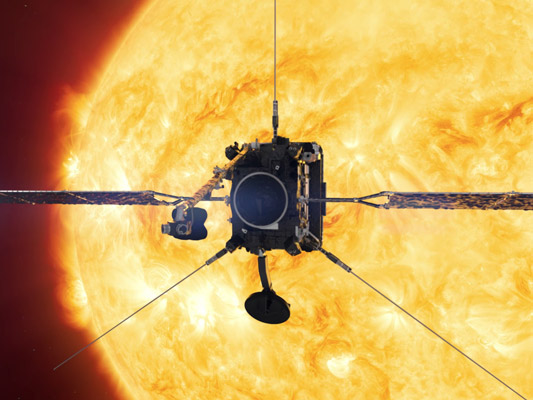
The ESA/NASA Solar Orbiter mission, launched in 2020, has ten instruments onboard of which two have PMOD/WRC involvement. Solar Orbiter is an orbiting solar physics observatory, and is investigating eruptions emanating from the sun which are responsible for so-called space weather. Space weather can sometimes have negative consequences: solar storms caused by violent solar flares can disrupt GPS, but also other technologies and electrical systems on which our civilization depends more and more. If space weather can be predicted more precisely, such failures can be better avoided in the future.
